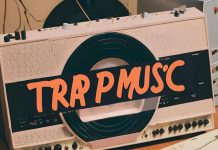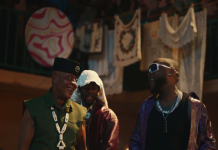What began as the raw soundtrack of inner-city struggle in the American South has evolved into one of the most influential forces in modern music.
Trap music — once confined to Atlanta’s “trap houses” — has now reshaped hip-hop, reinvented global pop trends, and produced some of the world’s biggest stars. But what exactly defines the genre, and why has it become such a worldwide phenomenon?
From Atlanta Streets to Worldwide Stages
Emerging in the 1990s, trap music grew out of Southern hip-hop and gangsta rap, taking its name from “trap houses,” slang for drug-dealing locations that shaped much of the early lyrical content. Producers like Shawty Redd pioneered the dark, menacing soundscape that became the genre’s early blueprint, while rappers T.I., Young Jeezy, and Gucci Mane — often referred to as trap’s “holy trinity” — pushed the style into mainstream awareness.
T.I.’s 2003 album Trap Muzik is widely regarded as one of the genre’s defining moments, cementing trap as a distinct artistic movement rather than just a street expression.
The Sound: Heavy, Haunting, and Hyper-Rhythmic
Trap’s signature sonic identity is unmistakable:
Thunderous 808 Bass: The bass-heavy thump from the iconic Roland TR-808 drum machine forms the foundation of most trap beats.
Rapid Hi-Hats and Snappy Snares: Unpredictable hi-hat rolls, crisp snares, and layered percussion create the genre’s restless, energetic pulse.
Triplet Rap Flow: Popularised by many artists — and famously used by Migos — the triplet cadence gives trap its rolling, hypnotic vocal rhythm.
Atmospheric Synths: Dark, cinematic melodies add emotional weight, giving trap its moody, often haunting feel.
Gritty Lyrical Themes: The lyrics traditionally explore survival, ambition, street realities, and the struggle for escape — giving the music both edge and authenticity.
Explosive Evolution: From Hip-Hop Niche to Global Dominance
By the 2010s, trap had broken out of Atlanta and into mainstream global culture.
Superstars like Future, Young Thug, and 2 Chainz led the charge, while producers such as Lex Luger introduced a more dramatic, orchestral style that changed the sound of radio hits, club anthems, and movie soundtracks.
Trap even crossed into electronic music, giving birth to EDM trap, a high-energy fusion driven by producers like Baauer and RL Grime, which dominated festivals and dance floors worldwide.
It didn’t stop there — trap evolved into multiple hybrid genres:
Latin Trap (with roots in Puerto Rico)
Trap Soul (a blend of R&B and trap rhythms)
K-Pop Trap, Country Trap, and other experimental fusions
Today, trap’s fingerprints can be found in pop, gospel, afrobeats, reggaeton, and even film scoring.
Why Trap Still Matters Today
Trap music remains influential because it captures more than sound — it captures emotion, environment, and ambition. Its themes of resilience and survival resonate with young audiences worldwide who see their own struggles mirrored in the music.
Beyond a genre, trap has become a mindset: a culture rooted in the hustle and the pursuit of transformation, no matter how tough the journey.
And from Atlanta’s corners to global arenas, that message continues to echo louder than ever.

































